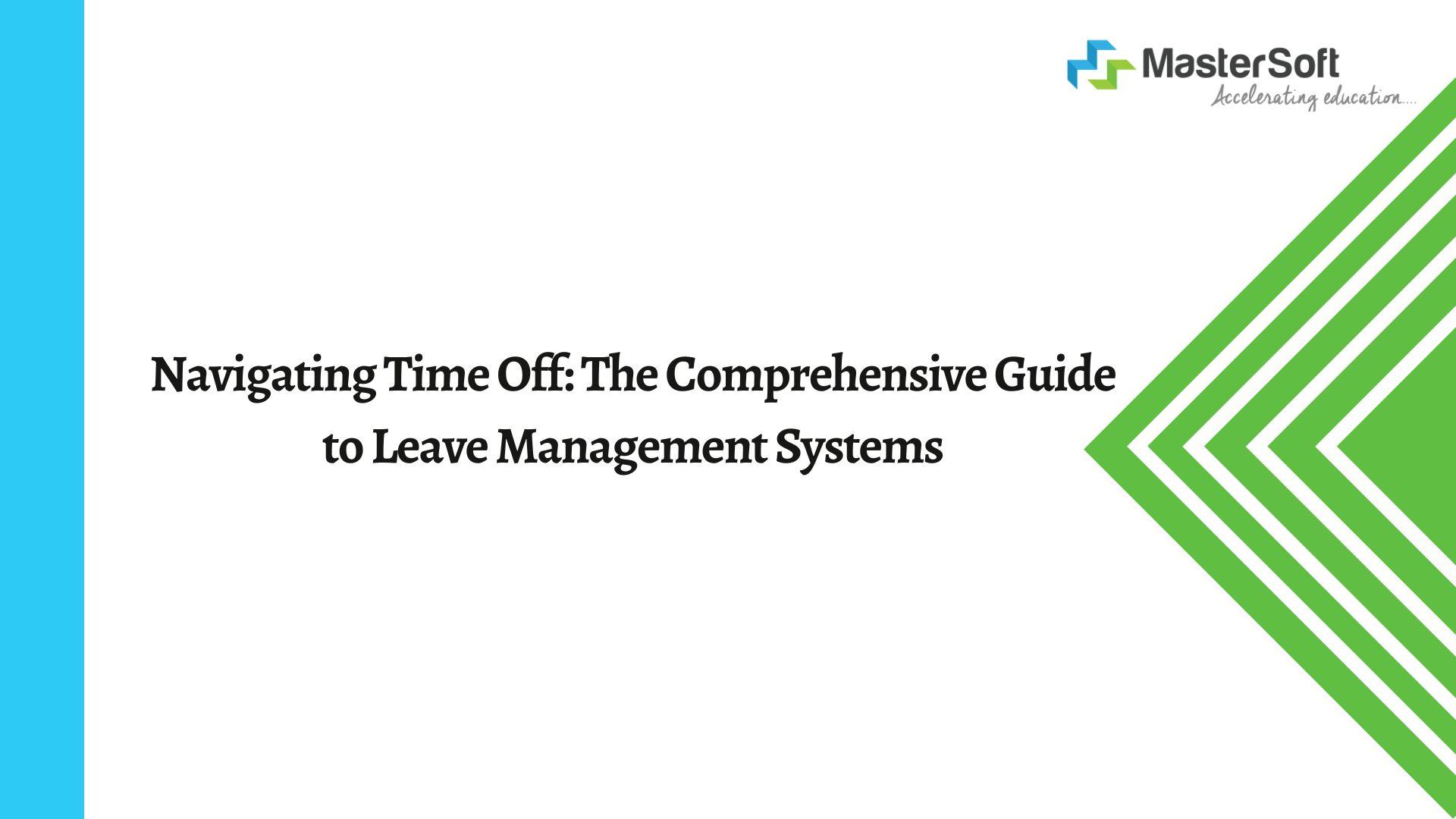In the dynamic landscape of workforce management, the Leave Management System (LMS) emerges as a compass, guiding organizations through the intricacies of employee time-off management. This blog is a comprehensive exploration of LMS, unraveling its evolution, functionalities, benefits, challenges, and the profound impact it has on fostering a healthy work-life balance.
Chapter 1: Prelude – The Symphony of Employee Leave
To appreciate the significance of LMS, our journey begins by tuning into the symphony of employee leave. From vacation days to sick leave, the prelude sets the stage for comprehending the multifaceted world of employee time-off and the pivotal role LMS plays in orchestrating this delicate balance.
Chapter 2: Genesis – Tracing the Roots of Leave Management
The genesis of LMS invites us to delve into its historical roots and trace its evolutionary path. From manual leave tracking to the digital revolution, LMS has metamorphosed into a dynamic tool, adapting to the changing needs of organizations and revolutionizing the way employee time-off is managed.
Chapter 3: Unveiling Functionality – Beyond Absence Tracking
At the core of every LMS lies a rich array of functionalities that extend beyond being a mere absence tracker. This chapter explores the dynamic features that LMS encompasses, from leave requests and approvals to attendance integration and policy adherence.
Chapter 4: Navigating Implementation Challenges – A Voyage to Success
While the promise of LMS is immense, the journey of implementation comes with its set of challenges. Resistance to change, data migration intricacies, and ensuring user adoption require strategic navigation. This chapter delves into the complexities of implementing LMS successfully.
Chapter 5: Benefits of LMS – Empowering Organizations and Employees
Delving into the transformative impact of LMS, this chapter explores the myriad benefits. From streamlined administrative tasks and improved data accuracy to enhanced employee satisfaction and compliance adherence, LMS revolutionizes the workforce management ecosystem, empowering both organizations and employees.
Chapter 6: Integration with HR Systems – A Symbiotic Relationship
LMS and Human Resource (HR) systems dance in a symbiotic relationship. This chapter explores how the integration of LMS with HR systems enhances the overall human capital management experience, providing a seamless connection between leave management and broader HR functions.
Chapter 7: Customization for Organizational Needs – Tailoring LMS for Unique Environments
Recognizing the diversity among organizations, modern LMS platforms offer customization options. This adaptability allows organizations to tailor their LMS implementation according to unique policies, reporting structures, and cultural nuances. The result is not a one-size-fits-all solution but a customizable LMS landscape that resonates with the unique identity of each organization.
Chapter 8: Future Trends and Innovations – The Evolving Tempo of Leave Management
Looking ahead, this chapter explores emerging trends and innovations in LMS. From advanced analytics for predictive leave planning to integration with emerging technologies like artificial intelligence, staying attuned to these innovations is crucial for organizations shaping the future of leave management.
Chapter 9: User Training and Continuous Improvement – Nurturing LMS Proficiency
A successful LMS implementation is contingent on the proficiency of its users. Comprehensive training programs for administrators, managers, and employees serve as rehearsals that unlock the full potential of LMS platforms. Continuous improvement strategies nurture ongoing refinement, ensuring users stay in harmony with updates, new features, and best practices.
Chapter 10: LMS in a Global Context – Fostering Work-Life Balance Worldwide
The impact of LMS extends beyond individual organizations; it resonates on a global scale. Standardized leave policies, interoperability between systems, and collaborative platforms create a harmonious melody that transcends borders. This interconnectedness contributes to the global promotion of work-life balance, fostering collaboration and best practices on an international stage.
Chapter 11: Conclusion – LMS as the Conductor of Work-Life Harmony
In the grand finale, LMS stands as the conductor, orchestrating the seamless integration of employee leave, organizational policies, and workforce insights. From simplifying leave processes to fostering a culture of well-being, each LMS becomes an indispensable masterpiece for organizations worldwide. As we reflect on its evolution, functionalities, challenges, and transformative impact, it is evident that LMS stands as the grand conductor in the ever-evolving and harmonious symphony of leave management.



